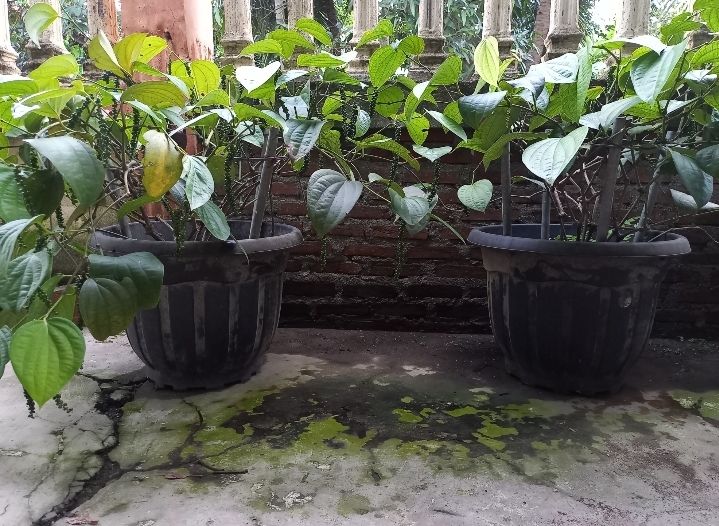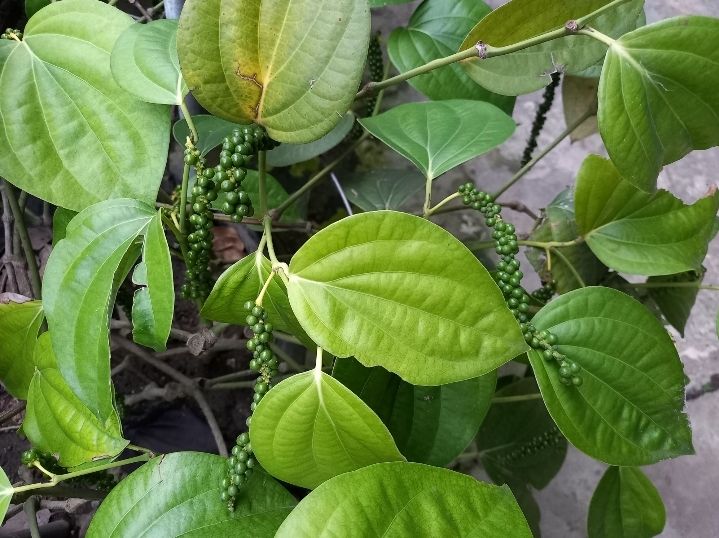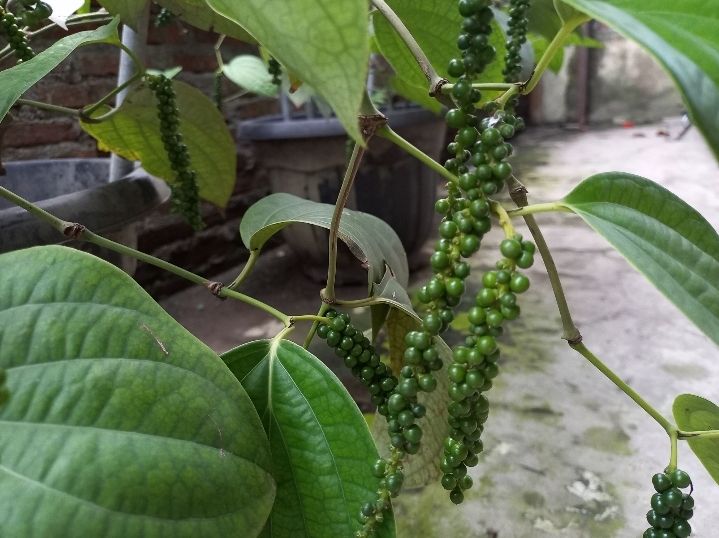
I’d like to take this opportunity to present one of the plants in front of my house to all of my friends. Although not an ornamental plant, this one has the potential to be one. This plant is a vine, and it typically grows tall. However, the plant in front of my house stays dormant.
If we want to take good care of it, it has two advantages: it may be an aesthetic plant and it can be a plant that is useful in daily life, naturally helping mothers in the kitchen. Pepper shrubs are what this plant is.

One of the goods used in international trade known as “The King of Spices” or “the King of Spices” is the pepper plant (Piper ningrum L.). In Indonesia, pepper is referred to as MERICA or SAHANG.
Despite having a larger area of pepper plantations than Vietnam, Indonesia is the second-largest exporter of pepper after that nation.
A pepper plant variety known as Pepper Perdu, also known as MERICA Perdu, does not spread and does not require climbing poles. Why doesn’t the pepper bush grow or climb? Since shrub pepper plants lack climbing tendrils, they are unable to climb climbing poles. In general, shrub pepper plants grow similarly to shrubs.
When compared to climbing pepper, shrub pepper has the following advantages:
- Plant maintenance is simpler;
- Harvesting is simpler;
- Creating sooner (2 years),
- More plants grow per square meter (4000–4500 plants/ha);
- Intercropping is possible; and
- An intercrop can be grown between annual crops.

Spray pesticides on plants once a month or as necessary to protect them against disease and pest infestations. You can utilize biological agents and biopesticides to control diseases and pests. The biological agent Trichoderma can be used to treat stem rot disease, which frequently affects bush peppers. Meanwhile, yam seed extract, clove powder, and tuba root extract are among the biopesticides frequently employed to manage pests of pepper shrubs.

The flowers that bloom the first year are cut back, allowing the plants to develop strong, lush growth initially. Depending on maintenance, shrub pepper plants can continue to produce every year until they are more than 10 years old. Production starts at 2 years of age. 200 grams of dried pepper can be obtained per plant during the first harvest. The following crop will provide about 300 grams of dry pepper per plant. After that, the blossoms start to produce fruit, which is then harvested every nine months or so. Pepper harvesting can then be done regularly, once every week. A pepper that is ripe for harvest will have a little yellowed stem and yellow or red fruit. The pepper harvest is finished.

Congratulations, your post has been curated by @scilwa, a curating account for @R2cornell's Discord Community.